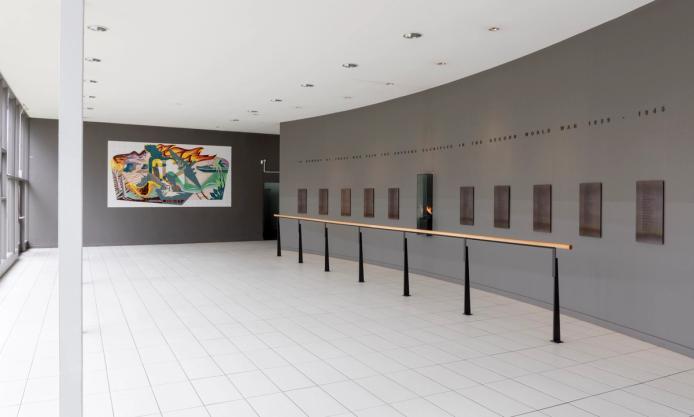
E. Mervyn Taylor, ‘Lest We Forget’ (1963/1966), War Memorial Stadium Hall of Memories, Whakaoriori Masterton
Image: Shaun Waugh, Public Art Heritage Aotearoa New Zealand, 2016
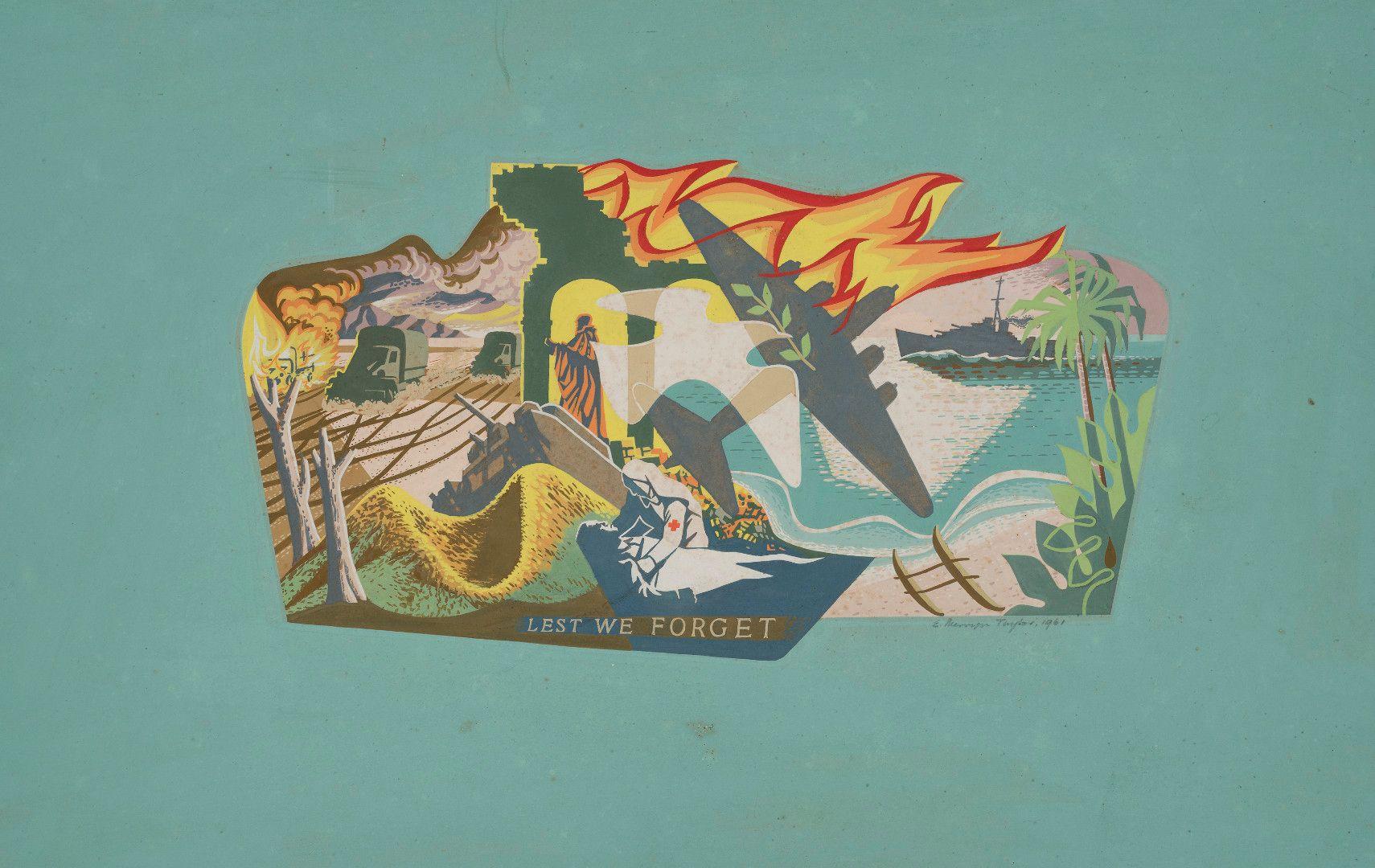
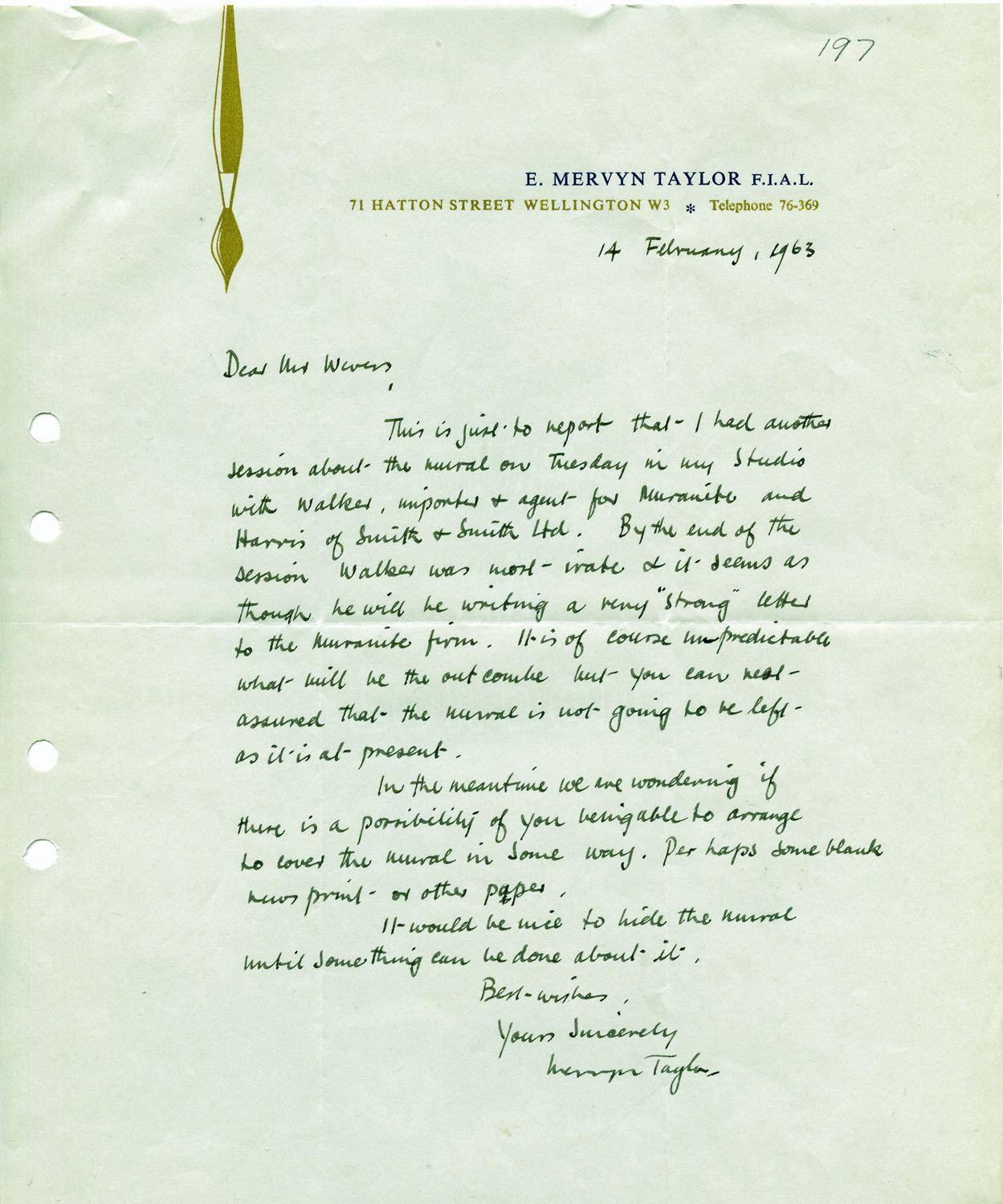
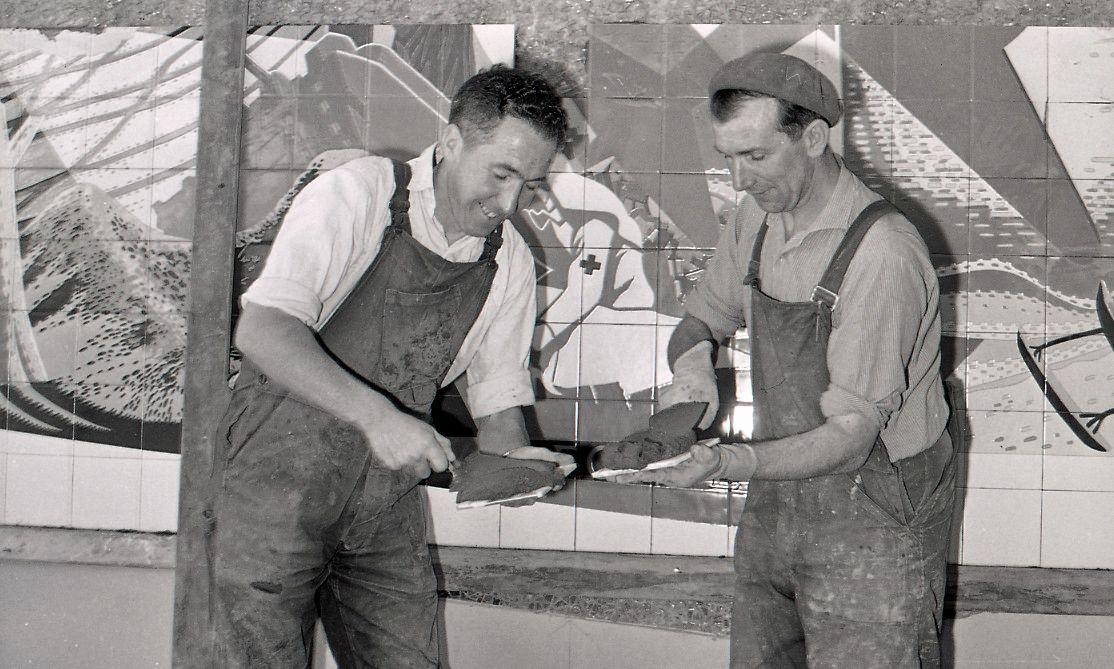
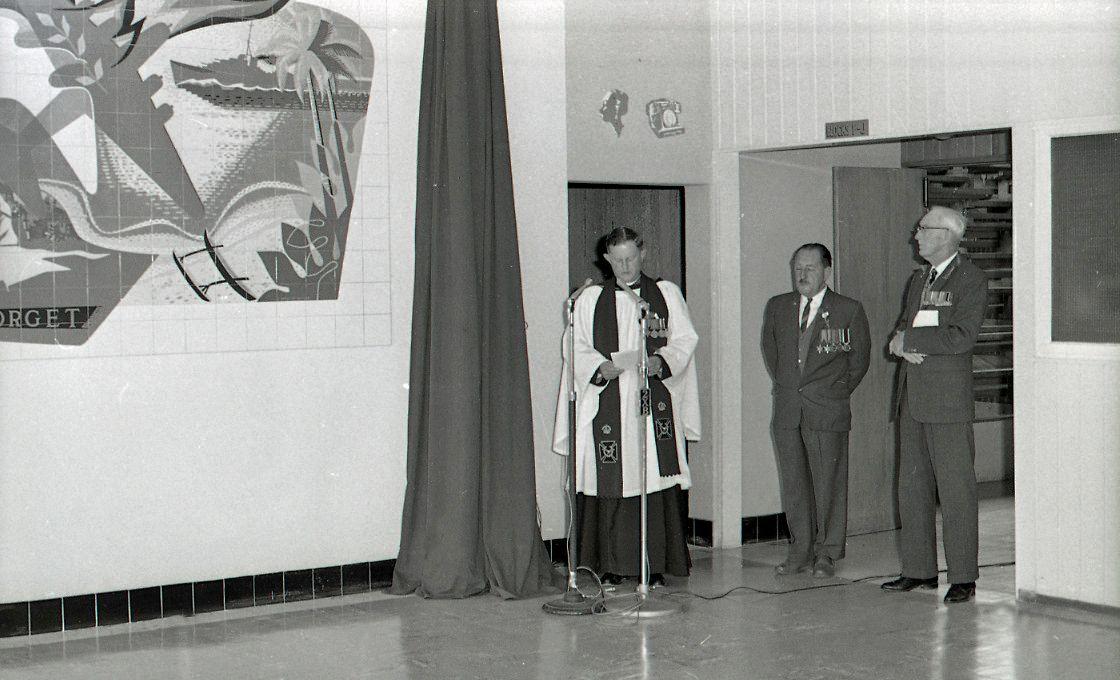

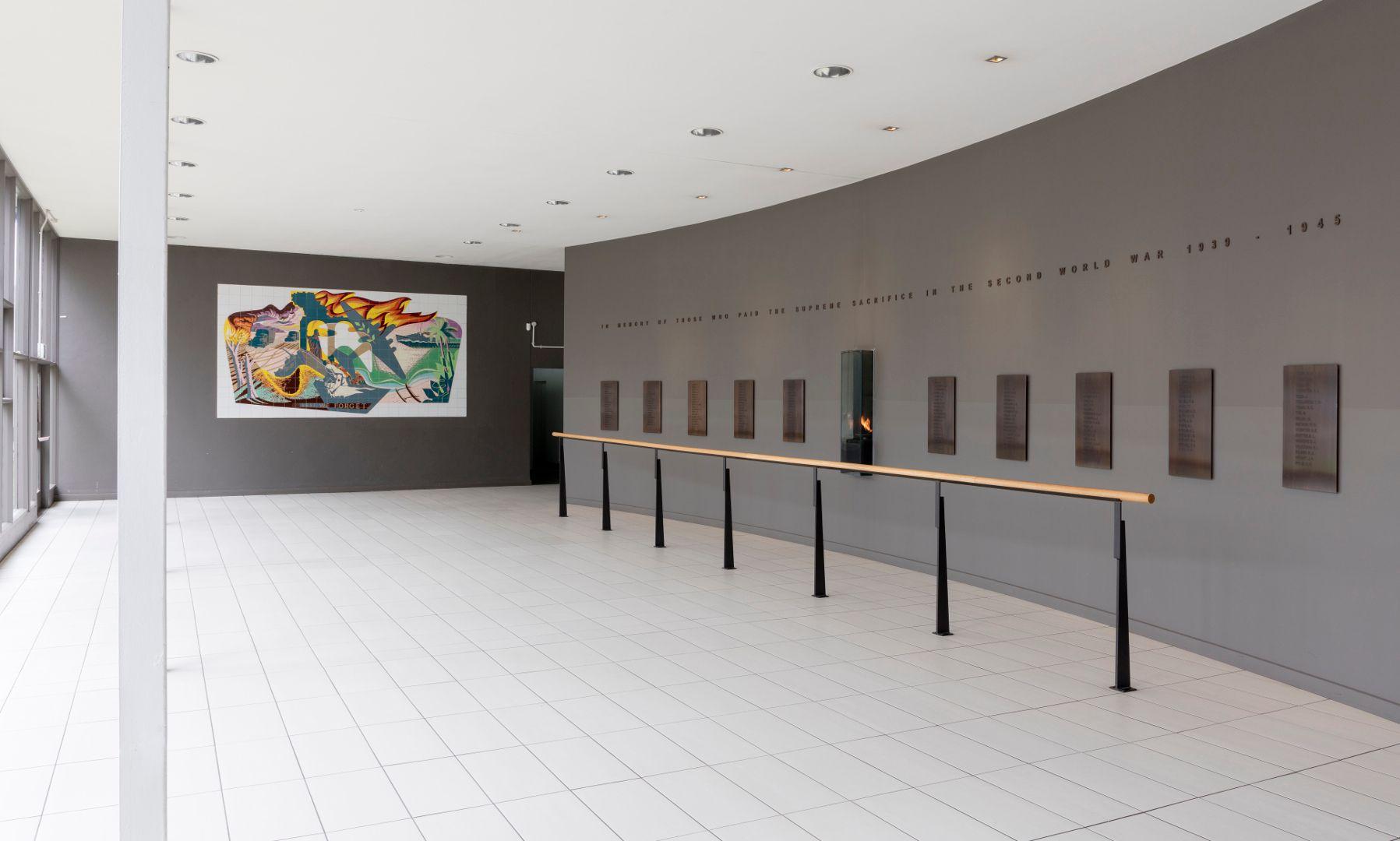
- DETAILS
- MAP
Description
Following the end of World War II Masterton resolved to create a series of ‘Living Memorial’ projects including the construction of a large community hall or stadium. Funding was approved in March 1960 and the project’s architects, Daniell & Wevers, recommended a decorative feature on the southern wall of the War Memorial Stadium’s Hall of Memories. E. Mervyn Taylor got the job, proposing a glass mosaic mural made from tiles sourced by Smith & Smith from an Italian factory.
Almost from the start things started to go wrong. Muranite produced the tiles in Venice and shipped them to England, where they were found to be water damaged. One year later the repaired/replaced tiles arrived from Italy and were installed in the Hall of Memories. Taylor, Daniell & Wevers, and a representative from Smith & Smith inspected the mural finding a series of faults: 5 colour variations; 4 variations from the original design; outlines of shapes not clean enough; and joints between tiles haphazard and not tight enough. Taylor himself wrote to the architects requesting that the mural be covered up so the public could not see it.
The NZ agent for Muranite, dismissed the criticism as ‘exaggerated’, but conceded that the toning down of some of the colours, combined with some lines not being as well defined as they should have been, had reduced the desired clean impression. Daniell & Wevers were not prepared to accept a ‘patched up’ mural, saying a complete replacement was the only sensible option. A stand-off ensued. The council’s solicitor became involved. Finally, by March 1964, Smith & Smith, Taylor and the Council had resolved to replace the mosaic with ceramic tiles mural manufactured by Carter & Co. of England. Tragically, Taylor died in June 1964. His wife, Teddy, arranged a revised design for the mural based on Taylor’s existing drawings. The tiles were finally installed in March 1966 just prior to being unveiled on Anzac Day, nearly 21 years after the end of the war they memorialised.
Text adapted from Gareth Winter’s essay “Lest We Forget: The Battle for the Mural” in Wanted: The Search for the Modernist Murals of E. Mervyn Taylor (Massey Press, 2018).
